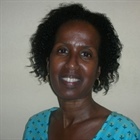By Winsome Leslie
 Winsome Leslie is the Multilateral Investment Fund's regional supervisor for the English-speaking Caribbean and Haiti. Previously, she was the economic attaché at the Embassy of Jamaica in Washington, D.C. She holds a PhD in International Relations from Columbia University.
Winsome Leslie is the Multilateral Investment Fund's regional supervisor for the English-speaking Caribbean and Haiti. Previously, she was the economic attaché at the Embassy of Jamaica in Washington, D.C. She holds a PhD in International Relations from Columbia University.
Five years after the cataclysmic earthquake in Haiti, there are encouraging signs of economic activity. In construction, two international chains, Best Western and Marriott, have opened hotels in Port-au-Prince in the last two years. Both have committed to hiring and training Haitian staff at all levels and to sourcing goods and services locally. Haitians in the diaspora are investing in new and existing businesses. Meanwhile, the Haitian government is keen on establishing meaningful partnerships with aid agencies and nongovernmental organizations to revitalize the country's agriculture sector, with the goals of replacing foreign imports with domestic production and achieving better food security.
The fact remains, however, that Haiti is still one of the most aid-dependent countries in the world, and is likely to remain so in the short to medium term. Given this reality, how can we help ensure that assistance from aid organizations will create meaningful and lasting change in the lives of the majority of Haitians?
Top down vs. bottom up
Scholars have long debated the merits of "top-down" versus "bottom-up" approaches to development assistance. The former focuses on macro plans and strategies, working in close collaboration with the government of the aid-recipient country. The latter takes a grassroots approach, where solutions are grounded in what works at the local level, based on feedback from the beneficiaries themselves. Scholars such as William Easterly--author of works including Planners versus Searchers in Foreign Aid and The White Man's Burden--would certainly advocate the bottom-up approach for a country such as Haiti. However, the reality is not so simple. Taking a macro, strategic approach, based on tested solutions that have worked elsewhere, can add value to development efforts in Haiti. At the same time, working in the trenches at the local level can produce meaningful results, innovation, and learning based on experimentation, all with the buy-in of local communities. The challenge for development organizations is to find the right mix.
Facing this challenge, the Multilateral Investment Fund (MIF) takes a macro view toward Haiti, focusing on the economic sectors and populations where we can add value and move the needle in terms of sustainable development. On the other hand, our niche in the country is working at the local level with small actors--small farmers, and micro and small companies--to increase their incomes. Therefore, we are testing a combination of top-down and bottom-up approaches.
Agriculture supply chains
One of our areas of focus is agriculture, where we are financing a number of initiatives related to "supply chains"--processes involved in the production and distribution of commodities--in partnership with organizations with a long-standing commitment to Haiti:
- Coffee. We have helped 5,000 growers (1/3rd of them women) improve the quality of their crop and achieve a fivefold annual increase in exports. We are working to reach an additional 10,000 small-scale producers, in partnership with Nestlé, the French Agency for Development, the Government of Colombia, the National Coffee Federation of Colombia, and Haiti's National Coffee Institute.
- Cocoa. We are working with the Swiss government to revitalize the sector, providing farmers with training in production and harvesting techniques and facilitating their access to much-needed external and internal markets. This effort is in partnership with Catholic Relief Services and Root Capital.
- Sorghum. We are collaborating with Haitian brewery and bottler Brasserie Nationale d'Haïti, S.A. (BRANA), a subsidiary of Dutch brewing company Heineken International, to create a new and efficient supply chain for commercial sorghum that meets international standards. This project seeks to increase the income of at least 18,000 farmers, covering half of Haiti's 10 administrative regions, who are already or will be engaged in the cultivation of the crop.
To sustain these efforts, the MIF is contemplating a capacity-building program for the network of agricultural cooperatives in Haiti. The idea is to empower a local institution to deliver the training, which would then cascade down from an initial group of solid cooperatives to weaker ones. This process could be a game changer for rural development. Stronger and more efficient cooperatives would be able to better identify markets and seize the opportunities that those markets offer, thereby increasing farmer incomes. Equally important, more capable cooperatives would be natural partners for the MIF as we seek to entrench and increase the economic gains to the small farmers in our future projects. Furthermore, this grassroots approach to organizational strengthening could teach us lessons that could be beneficial for other sectors.
Check back with us next year to see our development results.
From the Multilateral Investment Fund Trends blog

